5 Ways Japan is Accelerating Global Decarbonization Efforts
We are at a critical moment in the battle against the climate change. If we do not act quickly, the rise in global temperatures could wreak irreversible damage on our planet. Japan is committed to preventing negative climate outcomes. Here are five ways the country is contributing to decarbonization and building a cleaner future.
#1: Japan Ranks First in the World for Number of Companies Supporting the TCFD
As the urgency around the climate change increases, more Japanese companies are introducing decarbonization in their corporate management strategies. Today, they lead the world in the number of supporters for the Task Force on Climate-related Financial Disclosures (TCFD)—an international framework created by the Financial Stability Board. The TCFD recommends how companies and institutions should disclose their climate-related financial information, including risks and opportunities. As of September 2021, over 2,500 companies from around the world have embraced the framework—more than 500 of them Japanese.[1]
In the coming years, more Japanese companies and institutions are likely to become supporters.[2] Starting in April 2022, listed companies on the Prime Market of JPX will be required to disclose information based on the TCFD recommendations or an equivalent framework.[3]
The Japanese government also supports companies as they implement disclosures in line with the TCFD recommendations. It publishes practical guidance on how to conduct scenario analysis through actual cases.[4] Japan’s embrace of reporting disclosures spurs business growth and fosters important new partnerships between investors and companies. More importantly, it shows increased awareness and willingness among the private sector to consider climate change as a core issue for their business.
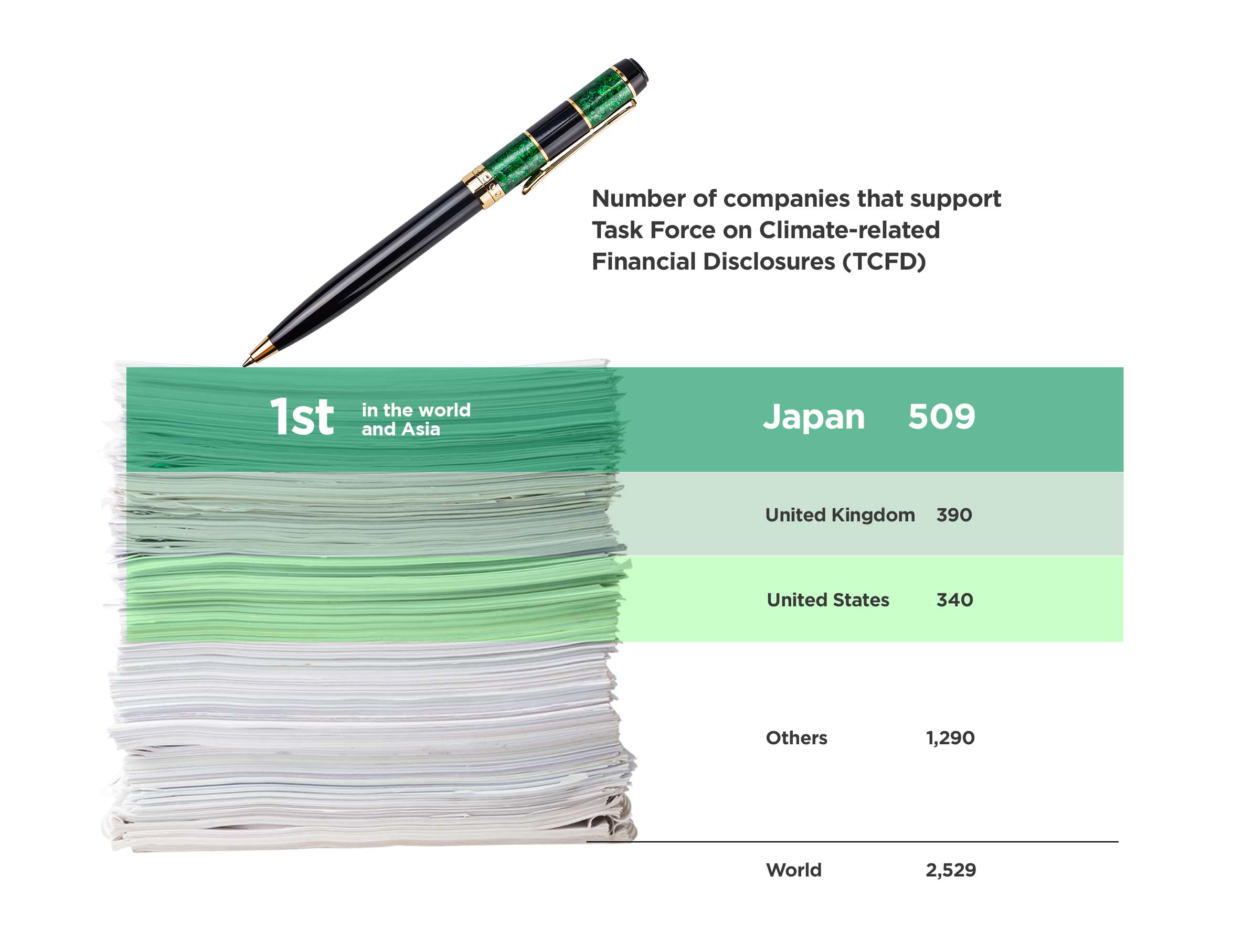

#2: Japan Is a Leader in Renewable Energy Patent Applications
Innovative technologies are vital to achieve the universal goal of net-zero carbon emissions. Japan is strongly promoting innovation in renewable energy technologies that will help achieve that goal on a global level.
Japan has filed more renewable energy international patent applications under the Patent Cooperation Treaty (PCT) than any other country in the world. Between 2010 and 2019, Japan filed 9,394 patent applications relating to solar, fuel cell, wind and geothermal technologies.[5]
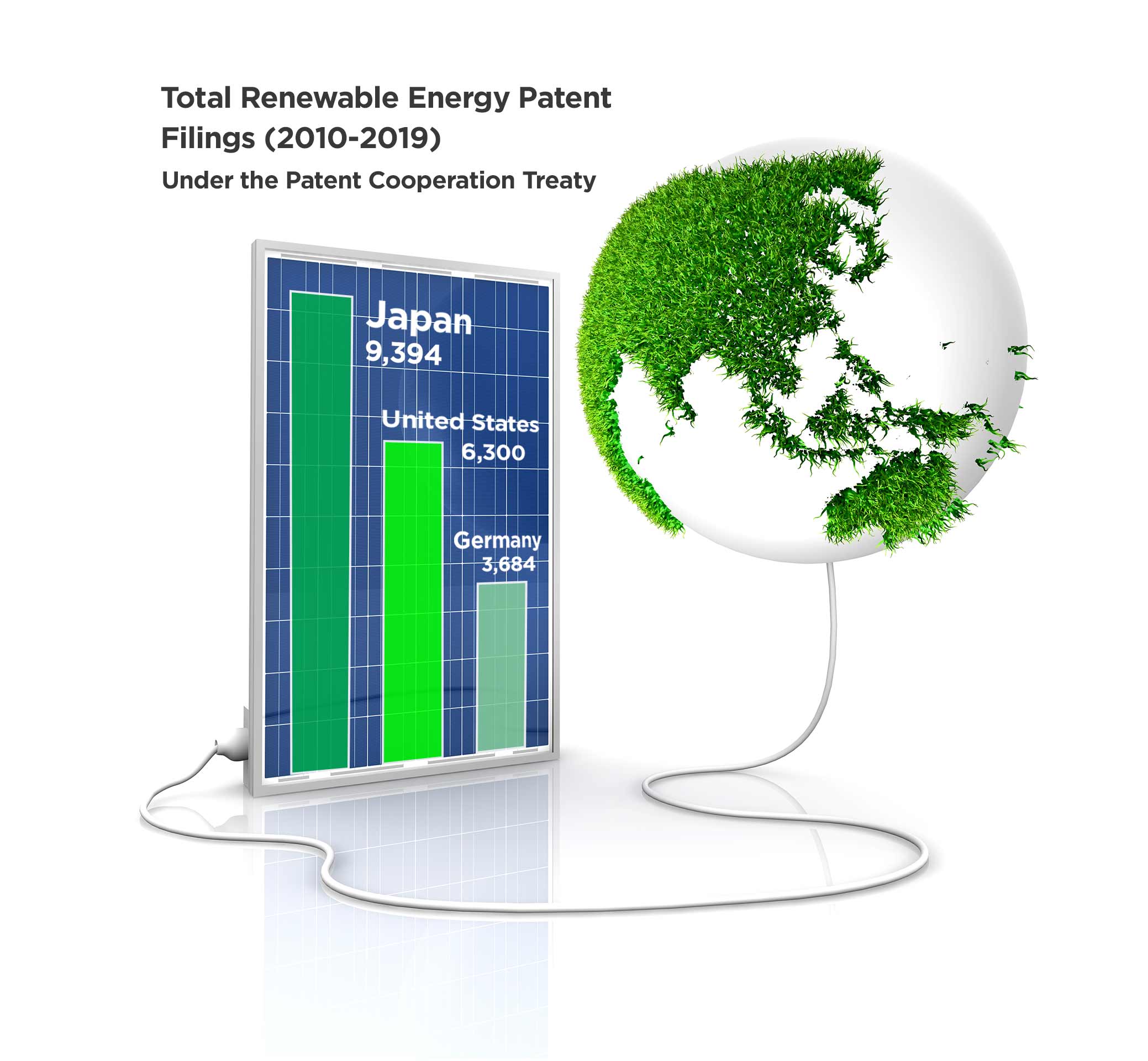

Japan also leads patent filings for battery technologies, accounting for roughly one-third of the all international patent families in 2018.[6]
Solar power, for instance, plays an important role in the global energy transition. Japan is already the world leader in terms of solar capacity per square kilometer;[7] nevertheless Japan requires innovations to further increase its solar capacity.
In September, Toshiba announced a film-based perovskite photovoltaic module that achieves 15.1% power conversion efficiency—the world’s best performance for a large-area (more than 700cm2) module using polymer film. Lightweight, thin, and bendable, it is expected to be installed in a variety of locations, including weak rooftops and office building windows.

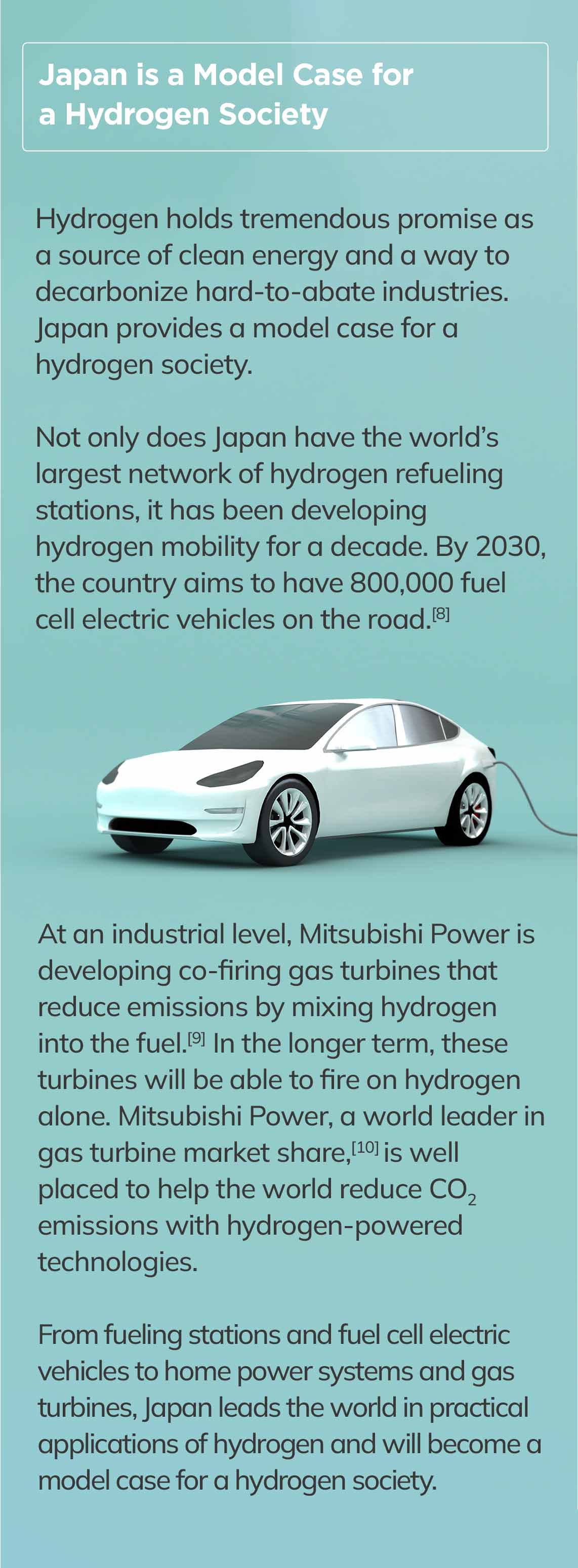
#3 Japan is a Leader in Energy Efficiency
Japan is among the most energy-efficient countries in the world. Between 2011 and 2018, total final energy consumption decreased by 8%, while gross domestic product (GDP) increased by 8%, resulting in a 15% reduction in energy intensity—the total energy consumption per unit of GDP.[11] Even as the economy grew over the past several decades, Japan steadily achieved greater energy efficiency.
The Energy Conservation Law is the foundation of Japan's energy conservation policy. Enacted in 1979, the law was a response to the oil shocks that occurred that year and in 1973. At the time, fear that the supply of oil would be interrupted caused great confusion throughout Japan. The Energy Conservation Law was established to promote the efficient use of energy and has since been amended according to the circumstances of the time.
On the technology front, Fujitsu is developing an example of how Japanese technologies conserve energy. The high-efficiency GaN-HEMT (gallium nitride high electron mobility transistors) reduces unnecessary heat generation in electronic devices. In turn, this enables energy-savings solutions that reduce power consumption in devices that support society.
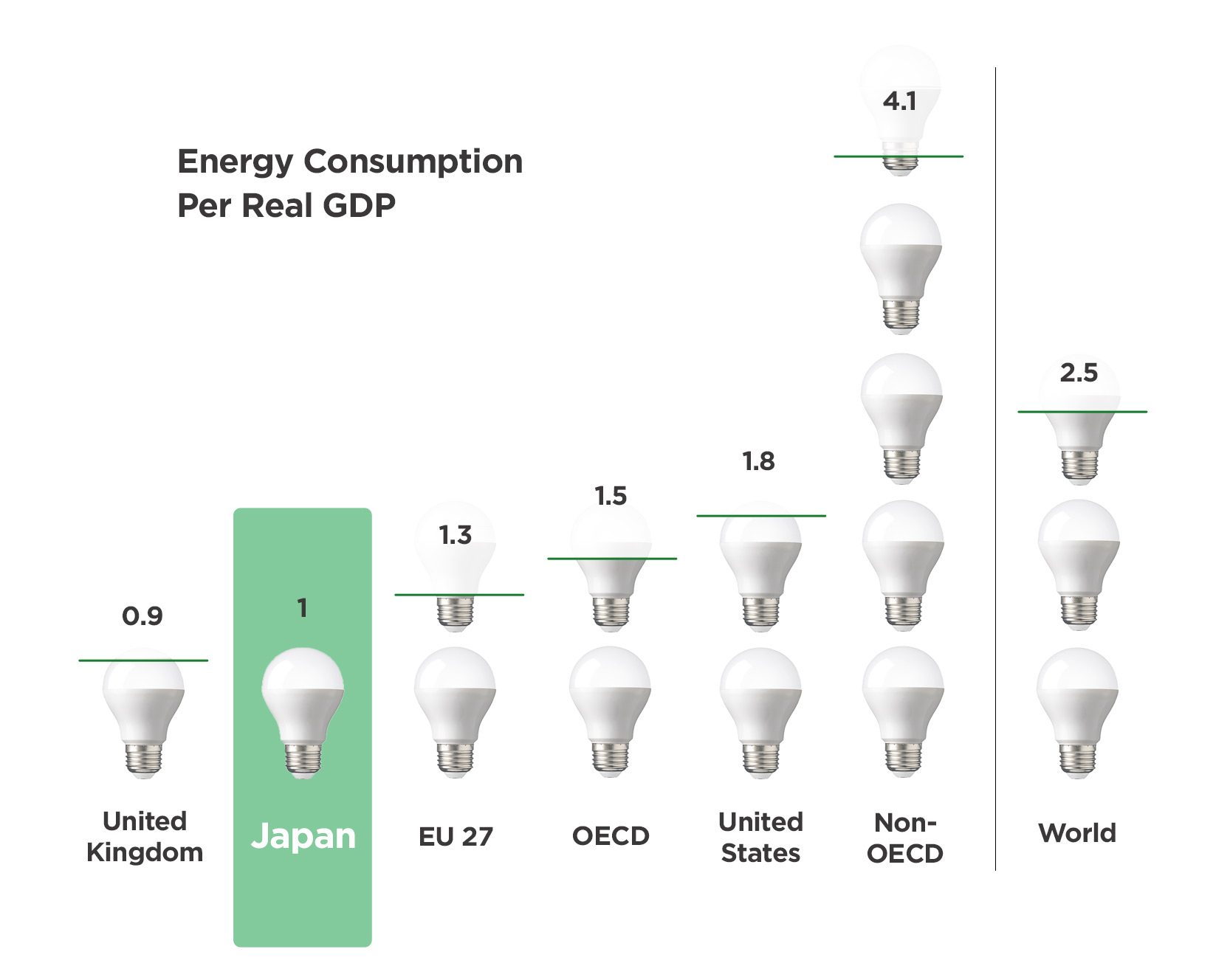
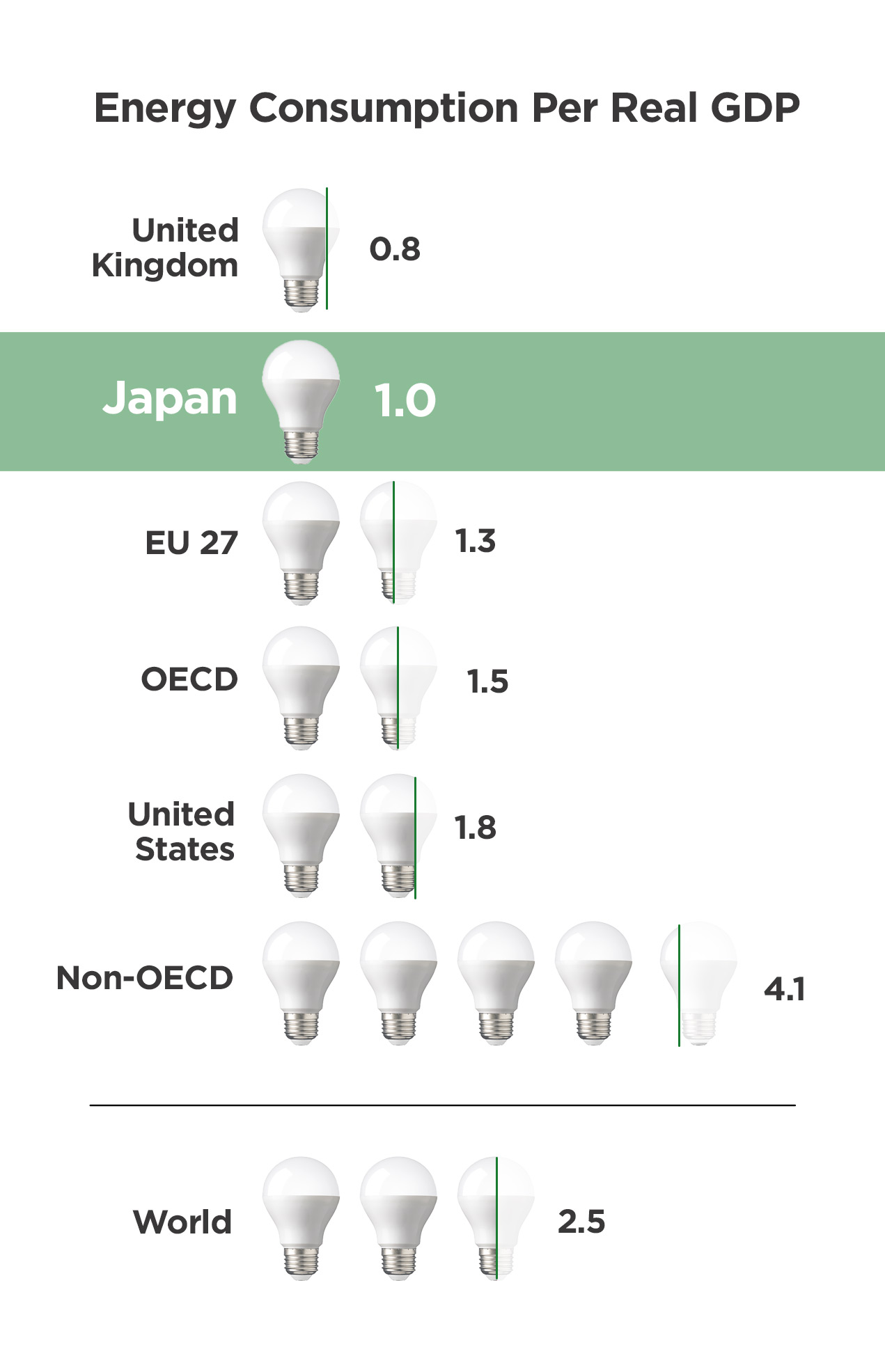
#4: 464 Municipalities Are Committed to Net Zero Carbon Emissions
While the national government is responsible for setting broad decarbonization targets, participation at the local governmental level is vital for success. As of September 2021, 464 local governments in Japan have declared their intentions to achieve net zero carbon emissions by 2050.[12] Together, they represent 88.5% of Japan’s population and will help ensure that Japan achieves its decarbonization goals.
To help local municipalities succeed, the national government set out the “Regional Decarbonization Roadmap” in June 2021. Over the five-year period to 2025, the roadmap encourages the implementation of existing technologies and the adoption of new measures without waiting for innovations.[13] For instance, it promotes the use of renewable energy by measures such as renting rooftops for solar panels, greater energy conservation and electric vehicles sharing among residents.
The roadmap also aims to spur a “decarbonization domino effect” whereby local initiatives catalyze similar efforts in neighboring municipalities, leading to a nationwide movement toward carbon neutrality that ultimately leads other countries to do the same.
#5 Japan Contributes to Net Zero on a Global Scale
Japan’s commitment to net zero extends beyond borders. In fact, Japan has promised climate finance, both public and private, totaling around US$60 billion (JPY6.5trillion) between 2021 and 2025 to assist developing countries in combating climate change.[14]
Beyond financing, the Japan International Cooperation Agency (JICA) continues to support the development of low-carbon power sources in developing countries.
Not only does this provide renewable energy systems, it imparts technical knowledge and skills through capacity building for locals to maintain a stable power supply using renewable energy systems.

Meanwhile, Japan established the Asia Energy Transition Initiative (AETI) to support sustainable growth and carbon neutrality in Asia.
The industrial and social structures and geographical conditions of each country vary. There is no "single best solution" for achieving carbon neutrality. Particularly in Asia, where energy demand is growing, transition pathways that utilize all energy sources and technologies are essential. AETI supports those needs in many ways including the development of new technologies and workshops to cultivate the human resources needed for advanced energy technologies.[15]
Technologies at the Japan PavilionThese are but a few of the many Japanese technologies and initiatives that promise to bring the world closer to net zero. Many more will be introduced at the Japan Pavilion. Please visit here to learn more.

[1] TCFD Consortium [2] TCFD Consortium [3] JPX [4] Ministry of the Environment [5] WIPO [6] EPO [7] Bloomberg [8] METI [9] MHI [10] MHI [11] IEA [12] Ministry of the Environment [13] MOFA [14] MOFA [15] METI
